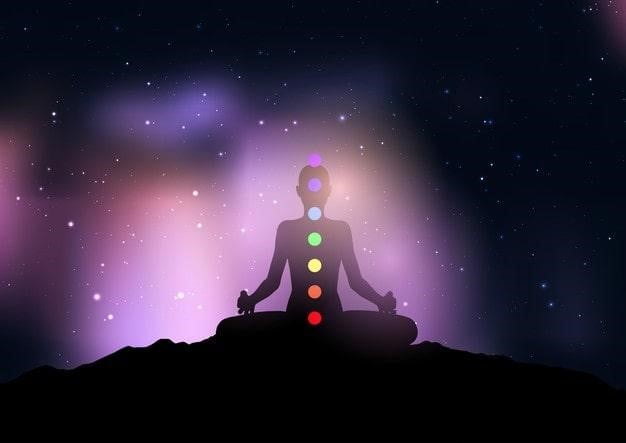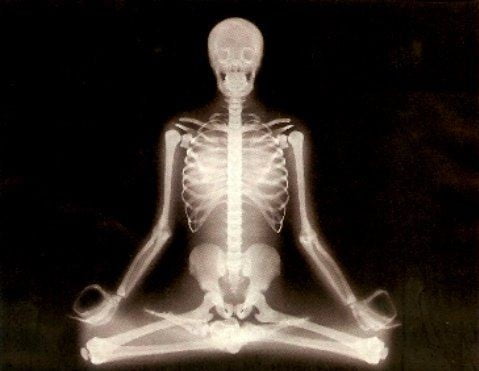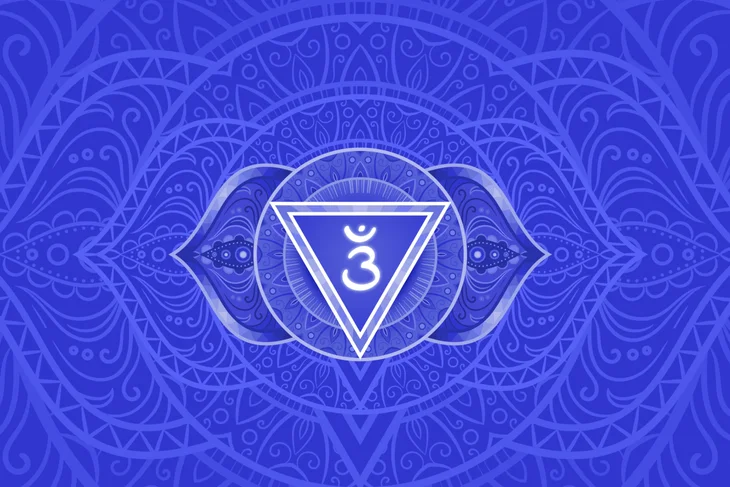Meditation has been practiced for thousands of years across diverse cultures, religions, and philosophies. While its earliest roots can be traced back to ancient India, China, and other Eastern traditions, meditation has now become a global practice, embraced for its spiritual, psychological, and health benefits.
This article explores the major meditation types & schools or traditions they stem from, providing a comprehensive guide to understanding how they shape modern meditation.
The Main Types of Meditation Types & Schools:
Meditation has been practiced for centuries across cultures as a way to cultivate inner peace, awareness, and spiritual growth. While its core essence is universal, different traditions and teachers have developed unique practices. Below are the main meditation types & schools, each offering distinctive approaches to mindfulness, healing, and self-realization.

Mindfulness Meditation:
Mindfulness meditation focuses on cultivating awareness of the present moment without judgment. Practitioners typically observe their breath, bodily sensations, or thoughts as they arise, fostering clarity and acceptance. Rooted in Buddhist traditions, it is widely practiced in modern psychology to reduce stress and anxiety.
By training the mind to stay present, mindfulness meditation helps break cycles of rumination, enhances emotional regulation, and deepens overall self-awareness. With consistent practice, individuals gain greater mental clarity, resilience, and balance, making it one of the most accessible and scientifically studied meditation techniques in the world.

Concentration Meditation:
Concentration meditation emphasizes focusing the mind on a single object, thought, or sensation, such as a candle flame, mantra, or breath. The goal is to build mental discipline and quiet internal distractions. This technique strengthens attention, reduces mental chatter, and fosters deeper states of absorption.
Often practiced in both Hindu and Buddhist traditions, it helps train the wandering mind to remain steady and engaged. Over time, practitioners develop sharper focus, enhanced productivity, and inner tranquility. Concentration meditation is particularly effective for those who struggle with distractions, as it trains the brain to achieve sustained mental clarity and calm.

Zen Meditation:
Zen meditation, or Zazen, originates from Zen Buddhism in Japan. It involves sitting in a stable posture, focusing on the breath, and observing thoughts without attachment. Unlike other methods, it emphasizes “just sitting,” allowing awareness to unfold naturally without striving for specific outcomes.
Zen meditation fosters deep presence, insight into the nature of the mind, and spiritual awakening. Often practiced in monasteries, it integrates discipline with profound simplicity. Over time, Zazen cultivates clarity, patience, and acceptance of life as it is. It is a path of direct experience, encouraging practitioners to embrace the “here and now” with openness and equanimity.

Transcendental Meditation:
Transcendental Meditation (TM) is a technique developed by Maharishi Mahesh Yogi. It involves silently repeating a personalized mantra for 20 minutes, twice daily. The repetition allows the mind to settle inward beyond ordinary thought, reaching a state of restful awareness. TM does not require concentration or contemplation, making it accessible to beginners.
Scientific studies suggest TM reduces stress, lowers blood pressure, and enhances overall well-being. Unlike other practices, it is standardized and taught systematically by certified instructors. TM’s emphasis is on transcending mental activity to experience pure consciousness, which promotes deep relaxation, creativity, and inner calm in everyday life.

Vedic Meditation:
Vedic Meditation is an ancient technique from India rooted in the Vedic tradition. Similar to TM, it uses mantras but is taught in a more personalized way, adapted to each individual. Practiced twice daily, Vedic Meditation allows practitioners to enter deep states of rest while remaining fully alert. It releases stress, boosts clarity, and harmonizes body and mind.
Unlike some forms of meditation requiring effort, Vedic Meditation is effortless and natural. Its foundations in Vedic wisdom connect practitioners to higher states of consciousness and self-awareness. Over time, it enhances resilience, creativity, and inner fulfillment, aligning daily life with spiritual balance.

Kundalini Meditation:
Kundalini meditation focuses on awakening the dormant spiritual energy known as Kundalini, believed to reside at the base of the spine. Through breathing techniques, mantras, chanting, and movements, practitioners channel this energy upward through the chakras. The awakening process promotes heightened awareness, emotional release, and spiritual transformation.
Rooted in yogic traditions, Kundalini meditation is considered powerful, often accompanied by intense experiences of bliss or purification. It balances energy flow within the body and fosters deep healing. Regular practice enhances intuition, creativity, and vitality, while guiding practitioners toward self-realization. It is both a spiritual journey and a method of empowerment.

Buddhist Meditation Techniques:
Buddhist meditation encompasses a variety of practices such as mindfulness, loving-kindness (Metta), and Vipassana. Each aims to cultivate insight, compassion, and liberation from suffering. Mindfulness strengthens awareness, Metta develops unconditional love, and Vipassana promotes deep understanding of impermanence. Buddhist techniques emphasize the Eightfold Path and lead practitioners toward enlightenment.
Meditation is not only a spiritual practice but also a practical tool for reducing stress and developing mental clarity. Rooted in compassion, these techniques foster wisdom, empathy, and equanimity. Over centuries, Buddhist meditation has influenced global mindfulness movements, offering profound methods for personal and collective transformation.

Heartfulness Meditation:
Heartfulness meditation is a modern spiritual practice that emphasizes connecting with the heart to cultivate inner peace, love, and clarity. Practitioners focus on the heart’s natural light, allowing it to expand through guided relaxation and meditation. Introduced by the Heartfulness Institute, this method incorporates prayer, transmission of subtle energy, and cleaning of emotional burdens.
It is simple, accessible, and effective for people of all ages. Heartfulness meditation fosters emotional balance, compassion, and spiritual growth. With regular practice, individuals experience harmony between mind and heart, leading to deeper relationships, resilience, and a profound sense of purpose in daily life.

Primordial Sound Meditation:
Primordial Sound Meditation is a technique popularized by Deepak Chopra, rooted in ancient Vedic traditions. It uses personalized mantras derived from the vibration of the universe at the time of one’s birth. Practitioners silently repeat their mantra to go beyond thought into stillness and pure awareness.
The practice is simple yet profound, offering deep relaxation, stress reduction, and spiritual connection. Unlike generic mantras, these sounds are highly individualized, creating a personal path to transcendence. By aligning with cosmic vibrations, practitioners feel more attuned to the universe, experience inner peace, and cultivate greater self-awareness and harmony in daily life.

Visualization Meditation:
Visualization meditation uses mental imagery to create positive experiences and outcomes. Practitioners imagine peaceful scenes, healing light, or personal goals, engaging the mind’s power to influence emotions and the body. Athletes, performers, and spiritual seekers often use this technique to boost confidence, reduce stress, or manifest intentions. By activating imagination, visualization enhances focus and emotional resilience.
Guided imagery often supports healing, relaxation, and motivation. It bridges the conscious and subconscious mind, making it a versatile tool. With consistent practice, visualization meditation helps reprogram limiting beliefs, strengthens creativity, and fosters a sense of empowerment and inner alignment with desired outcomes.

Tummo Meditation:
Tummo meditation, practiced by Tibetan Buddhists, is a powerful technique combining visualization, breath control, and inner heat generation. Practitioners visualize flames within their body, particularly in the abdomen, and synchronize the imagery with controlled breathing. This practice enhances resilience, boosts immunity, and generates warmth, even in freezing conditions.
Monks trained in Tummo are known to dry wet sheets on their bodies in icy climates. Beyond physical benefits, Tummo deepens spiritual awakening by cultivating inner strength and awareness of subtle energies. It symbolizes burning away ignorance and obstacles, transforming body and mind. Tummo remains a profound path of mastery and liberation.

Spiritual Meditation:
Spiritual meditation transcends techniques to create a connection with the divine or higher consciousness. It may include prayer, chanting, or silent contemplation, depending on personal beliefs. Unlike goal-oriented practices, it focuses on surrender, faith, and deep listening. Practitioners often experience peace, guidance, and a sense of oneness with creation.
Found across many religions—Hinduism, Christianity, Sufism, and Buddhism—spiritual meditation unites seekers with universal truth. It fosters humility, compassion, and devotion, guiding individuals to align with a higher purpose. More than a method, it is a journey toward self-realization and inner fulfillment, awakening a sacred connection that transcends the material world.

Hindu Meditation:
Hindu meditation encompasses ancient practices such as dhyana, mantra repetition, and yogic breathing. Rooted in Vedic and yogic traditions, it aims to quiet the mind, awaken spiritual energy, and unite the practitioner with Brahman, the ultimate reality. Common techniques include focusing on a deity, chanting mantras like “Om,” or meditating on the chakras.
Hindu meditation emphasizes self-realization, liberation (moksha), and harmony with universal consciousness. It integrates body, mind, and spirit, fostering clarity and devotion. Over millennia, Hindu meditation has inspired yoga, Ayurveda, and global spiritual movements. It remains a timeless practice for cultivating inner strength, balance, and divine connection.

Taoist Meditation Technique:
Taoist meditation originates from ancient China, blending philosophy, spirituality, and energy cultivation. Techniques include inner alchemy, breathwork, and visualization of energy (Qi) flowing through meridians. Taoist meditation seeks harmony with the Tao—the universal flow of life. Practices like “microcosmic orbit” circulation balance yin and yang energies, supporting longevity, vitality, and spiritual awakening.
Unlike purely contemplative traditions, Taoist meditation integrates body awareness, breath, and visualization to nurture health and spiritual transformation. It encourages effortless living, aligning the individual with nature’s rhythms. By cultivating energy and serenity, Taoist meditation leads to balance, wisdom, and union with the natural universe.

White Skeleton Meditation:
White Skeleton Meditation is a Buddhist technique designed to cultivate detachment and insight into impermanence. Practitioners visualize their body as a skeleton, progressively transforming it into white bones and eventually dissolving into light. This stark imagery fosters awareness of mortality, helping overcome attachment to the physical form.
The practice reduces fear of death, strengthens mindfulness, and deepens compassion. By contemplating impermanence, practitioners develop equanimity and acceptance of life’s transient nature. Though intense, White Skeleton Meditation offers profound spiritual clarity, reminding practitioners of the temporary nature of existence and guiding them toward liberation from suffering and material attachments.

Merkaba Meditation:
Merkaba Meditation is a mystical practice rooted in sacred geometry and ancient Jewish mysticism. “Merkaba” means “light-spirit-body,” symbolizing the vehicle of ascension. Practitioners visualize interlocking tetrahedra of light spinning around their body, activating higher states of consciousness and spiritual protection. This meditation is believed to connect individuals with higher dimensions, expanding awareness beyond the physical realm.
It fosters healing, energy balance, and spiritual awakening. Often associated with New Age spirituality, Merkaba Meditation encourages deep visualization, breathwork, and intention. Regular practice can heighten intuition, strengthen energetic fields, and help practitioners access profound mystical experiences and cosmic consciousness.

OSHO Meditation Techniques:
OSHO Meditation Techniques, created by spiritual teacher Osho, emphasize active, dynamic methods rather than silent sitting. Practices like Dynamic Meditation involve shaking, dancing, and cathartic release, followed by silence and stillness. These techniques help modern individuals release suppressed emotions and mental clutter before settling into meditative states.
Osho believed in embracing life fully, making meditation playful and transformative. Techniques like Kundalini Meditation, Nadabrahma, and laughter meditations reflect this philosophy. The goal is to clear the mind through activity, allowing natural awareness to emerge. Osho’s methods blend ancient wisdom with modern psychology, making meditation accessible, energetic, and deeply liberating.

Twin Hearts Meditation:
Twin Hearts Meditation, developed by Master Choa Kok Sui, is a guided meditation for peace and healing. It activates the heart and crown chakras—the “twin hearts”—to channel divine energy. Practitioners bless the earth with loving-kindness, radiating peace and compassion. The meditation fosters emotional cleansing, stress relief, and spiritual growth.
It is widely used in Pranic Healing practices to amplify healing energy. Simple yet powerful, Twin Hearts Meditation benefits both the practitioner and the world by spreading positive vibrations. With regular practice, it enhances intuition, inner peace, and spiritual connection, while serving as a tool for global harmony and healing.

Jedi Meditation:
Jedi Meditation, inspired by the Star Wars universe, is a modern practice combining mindfulness, visualization, and energy work. Practitioners emulate the discipline and awareness of Jedi, focusing on balance, compassion, and connection to the “Force.” Techniques may include breathwork, visualization of light, or contemplation of virtues like courage and wisdom.
Though fictional in origin, Jedi Meditation has gained popularity as a creative spiritual practice. It helps individuals cultivate mindfulness, emotional regulation, and resilience in daily life. By blending pop culture with meditation principles, it appeals to modern seekers, encouraging self-mastery, inner strength, and harmony with the universe.

6 Phase Meditation:
The 6 Phase Meditation, created by Vishen Lakhiani of Mindvalley, is a guided practice designed for modern lifestyles. It consists of six stages: compassion, gratitude, forgiveness, envisioning the future, daily intention, and blessing. Each phase shifts mindset and emotional state, fostering personal transformation and fulfillment.
Unlike traditional techniques, it integrates psychology, visualization, and spirituality. The structured approach makes it accessible for beginners while delivering profound results. Regular practice enhances positivity, focus, and resilience. By systematically aligning thoughts and emotions, the 6 Phase Meditation empowers individuals to create meaningful lives, combining mindfulness with intentional living for holistic growth.

Vipassana Meditation:
Vipassana Meditation, meaning “insight,” is one of the oldest Buddhist practices taught by the Buddha himself. It involves observing bodily sensations, thoughts, and emotions with equanimity to understand impermanence, suffering, and selflessness. Usually taught in 10-day silent retreats, Vipassana emphasizes direct experience over theory.
Through disciplined observation, practitioners break mental conditioning, release cravings, and develop deep inner peace. Vipassana fosters wisdom and compassion, offering a path to liberation. It is a transformative practice that purifies the mind, reduces stress, and awakens clarity. Today, Vipassana is practiced worldwide, inspiring millions to live with awareness, balance, and harmony.

Mantra Meditation:
Mantra Meditation involves repeating a sacred sound, word, or phrase—such as “Om”—to focus the mind and connect with higher consciousness. The vibration of the mantra quiets mental chatter, aligns energy, and deepens concentration. Found in Hinduism, Buddhism, and other traditions, mantra meditation fosters peace, clarity, and spiritual awakening.
It can be practiced aloud or silently, often synchronized with breath. The repetition creates a rhythm that calms the nervous system and uplifts emotions. Over time, practitioners experience inner stillness, heightened awareness, and connection to universal energy. Mantra Meditation is accessible, effective, and powerful for cultivating focus and devotion.

Chakra Meditation:
Chakra Meditation focuses on balancing the body’s energy centers, or chakras, which influence physical, emotional, and spiritual well-being. Practitioners use visualization, sound, or breath to cleanse and activate these seven main energy points. Techniques may include chanting bija mantras, visualizing colors, or directing breath to each chakra.
Balanced chakras promote harmony, vitality, and inner peace, while blockages can manifest as stress or illness. Chakra meditation fosters self-awareness, healing, and spiritual growth by aligning mind, body, and spirit. With regular practice, individuals experience greater balance, intuition, and energy flow, connecting deeply with their inner self and universal life force.
Choosing the Right Meditation Types & Schools for You:
Since there are many meditation types & schools, the right choice depends on:
- Purpose: Relaxation, stress relief, spiritual growth, or self-discovery.
- Personality: Some prefer silent practices (mindfulness, Zen), others enjoy active methods (chanting, movement).
- Tradition: Religious/spiritual alignment can influence choice.
- Lifestyle: Short daily practices may work better for busy schedules.
Scientific Insights on Meditation Types & Schools:
Modern neuroscience has studied different meditation styles and found that:
- Mindfulness reduces activity in the default mode network (responsible for mind wandering).
- Mantra Meditation calms the amygdala (stress center of the brain).
- Loving-Kindness increases empathy and compassion-related brain regions.
- Transcendental Meditation enhances brain coherence and cardiovascular health.
Conclusion:
Meditation is a vast and diverse field, offering countless meditation types & schools shaped by centuries of wisdom. Whether rooted in Buddhism, Hinduism, Taoism, Christianity, Islam, or modern secular psychology, each school offers unique ways to explore consciousness, reduce suffering, and enhance well-being.
From mindfulness and Zen to mantra chanting and yoga nidra, there is no single “best” meditation. The right practice is the one that resonates personally, fits your goals, and supports your journey toward inner peace and self-realization. By understanding the meditation types & schools, we can appreciate the richness of this ancient practice and find the path most aligned with our mind, body, and spirit.





